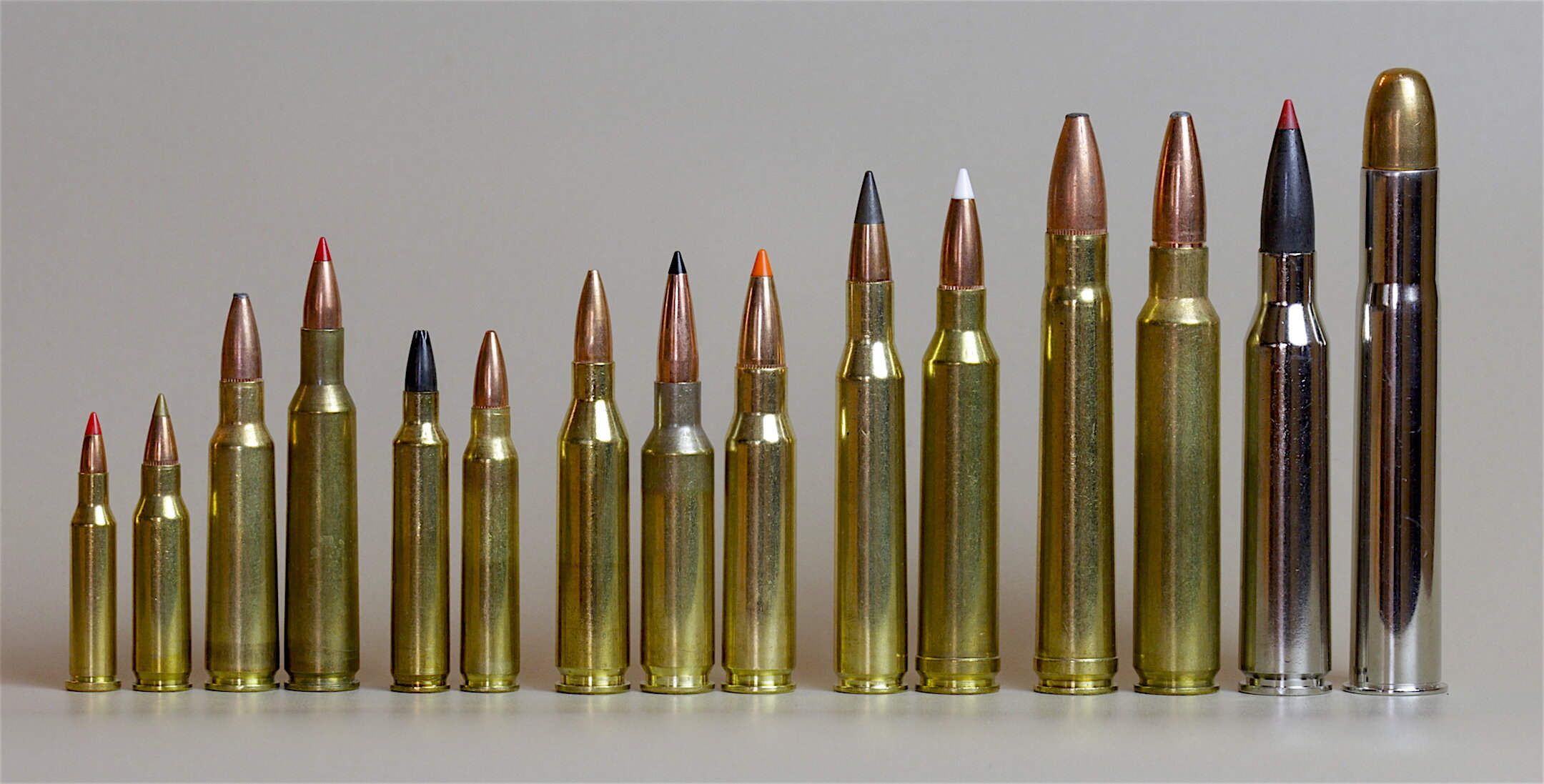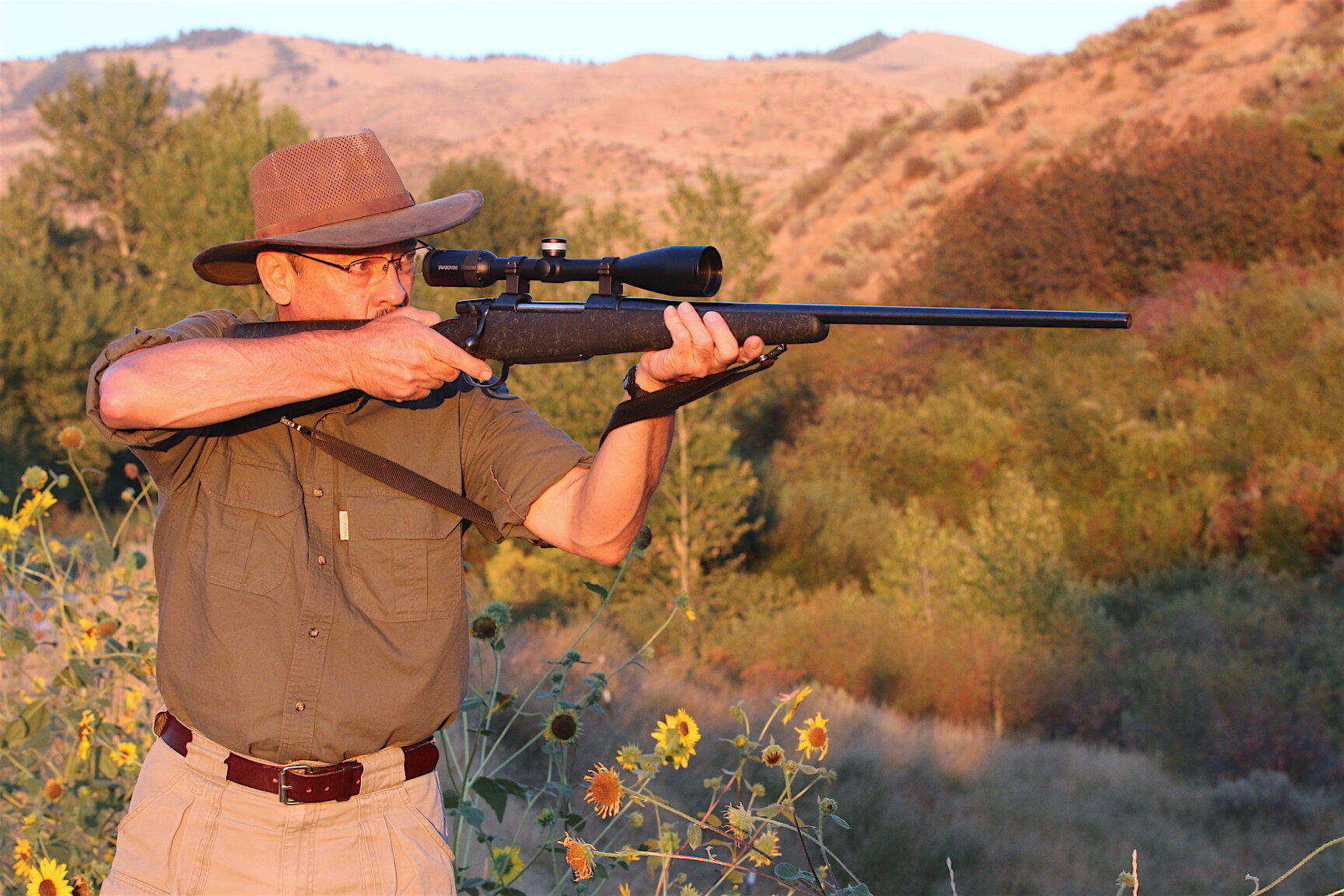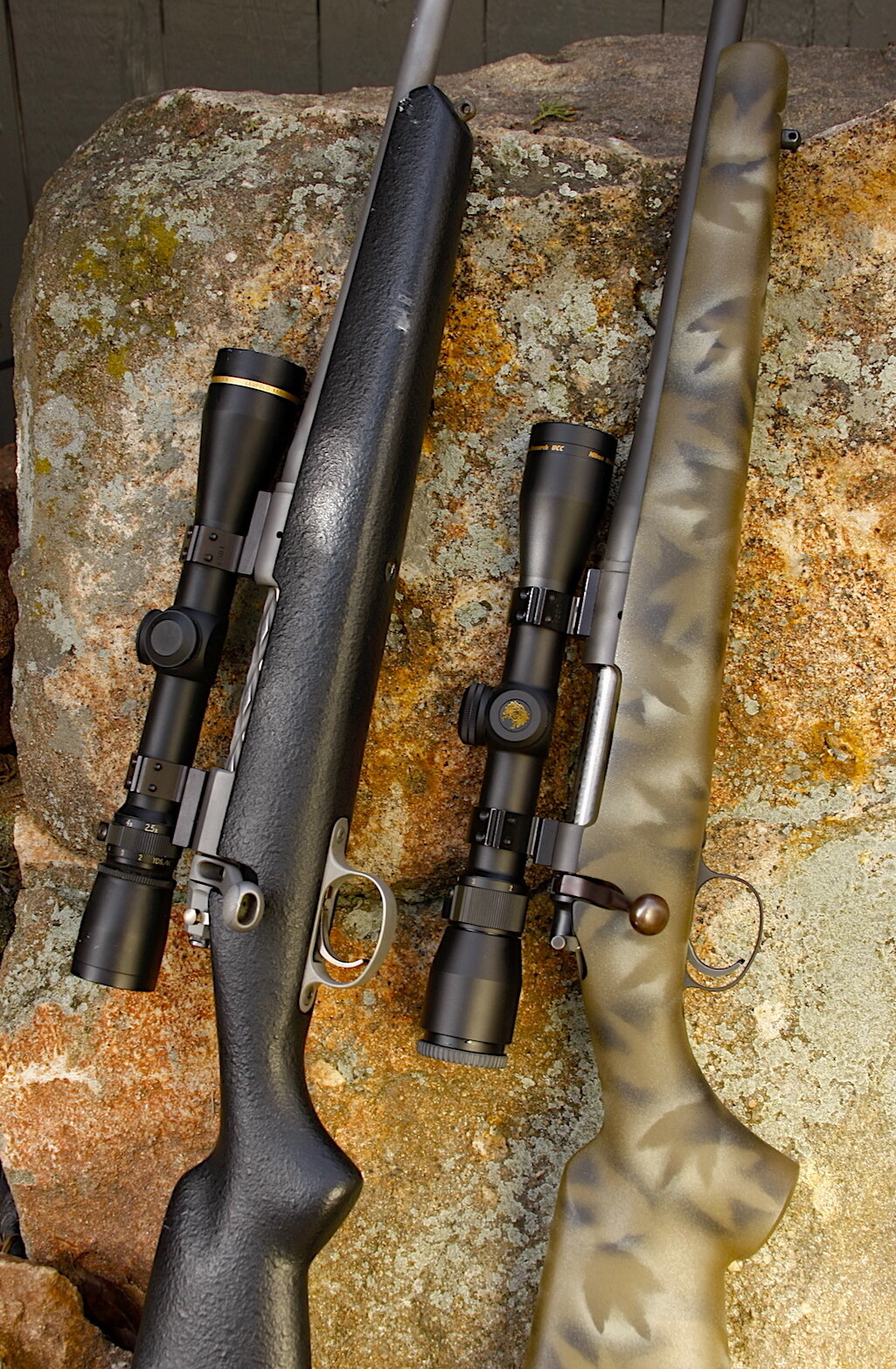Short-Action Rifle Versus Long-Action
You might be thinking you need to buy a short-action rifle so you can shoot one of the vastly superior short-action cartridges, especially the 308 Winchester and 6.5 Creedmoor.
Think again.
There’s nothing wrong with short-action rifles and cartridges, but there are no major advantages in them, either. They are not vastly superior to anything. They won’t shoot farther, flatter and harder than long-action or magnum-action centerfire cartridges. Nor appreciably more accurately. Unless you're splitting hairs. They won’t knock a pound off your carry weight or cut your cycle time in half.
So what’s all the fuss about?
Short-Action and Long-Action Defined
To figure this out, let’s define short-action and long-action. Essentially all we’re talking about is the length of a cartridge and the rifle’s action — the part that includes the firing pin, locking bolt, trigger and other parts involved with cycling and firing cartridges. This must be long enough to cycle those cartridges in and out of battery. Cartridges, of course, come in a wide variety of lengths, diameters, tapers, rim types and calibers, but most fall into five broad categories: magnum, standard (or long,) short, mini or super-short, and “really super short.” Let’s flesh these out a bit:
Magnum-Action: This size was created to handle the 375 H&H Magnum cartridges and any of the same length or shorter. Cartridge Overall Length (COL) is standardized at 3.6 inches. The early Weatherby cartridges were based on a full-length 375 H&H case, as are newer super magnums like the Remington Ultra Magnums.
Standard or Long-Action: This category is based on the 30-06 Springfield cartridge with a COL of 3.340 inches. Many belted magnums based on the 375 H&H case fit standard actions because they were reduced in length when designed. Popular ones include 300 Win. Mag., 7mm Rem. Mag., 338 Win. Mag. and even 458 Win. Mag. A newer standard-length magnum is the 375 Ruger.
Short-Action: The 308 Winchester was the model for this action length. It was created by shortening the 30-06 case. COL is established at 2.8 inches. Rounds like 243 Win., 260 Rem., 6.5 Creedmoor, 7mm-08 Rem., 338 Federal, 358 Win. fit here. A couple of little known “sleepers” are the 6.5mm and 35 Remington Magnums.
Mini-action: This is a 21st century, bolt-action rifle invention to take advantage of the short-lived, 2.36”Winchester Super Short Magnums and others. Howa is currently offering a new mini-action that is 12% shorter than its short-action. It’s chambered for 204 Ruger, 222 Rem., 223 Rem. 6.5 Grendel and 7.62x39mm.
An important point to note is that action lengths aren’t really standardized. For instance, the Remington M700 short-action magazine is 2.84” long, the Winchester goes 2.875” and the Mossberg Patriot Predator 6.5 Creedmoor detachable box magazine is 2.868”. I measured a Kimber 243 Win. magazine at 2.812” and an Ultra Light Arms M20 in 284 Win. at 2.90”. Will the real short-action please stand up? Extra magazine and action length matter when trying to shoot today's long, high BC bullets in short-action rifles. Similar things apply to long actions. The Rem M700 standard-length action is long enough to handle 375 H&H Magnum lengths, which includes the RUM cartridges. Until the 1980s Winchester ran all its short-action chamberings in long-action rifles. It's current short-actions offer a bit more room than Remington short-actions.
Really Super Short Actions: Over the years some manufacturers have built really short actions to better fit peculiarly short cartridges such as the 22 Hornet (1.723”), 17 Remington Fireball (1.830”) and 218 Bee (1.680”.)Today, thanks to CNC machining, custom length actions can be more easily and affordably built for nearly any custom application, further blurring the lines between long and short actions.
AR15 is a Consistently Short Short-Action
One action length we can count on for consistency is the AR-15 because that action was tailored specifically for the 5.56 x 45mm NATO (aka 223 Rem.) COL of 2.26 inches. Anything longer will not fit an AR-15 magazine. This is why we’ve seen development of such shorties as the 6.5 Grendel, 300 Blackout, 22 Nosler and 450 Bushmaster. It is primarily magazine length that determines what a lot of rifles will or will not handle, but action type also plays a role, and to appreciate this, let’s step back to the blackpowder era of the late 19th century...
Why Short-Action Hardly Matters in Single-Shots
In the blackpowder days cartridges grew from the 1.592” 44-40 Winchester to such monstrosities as the 44-100 Wesson, which stretched nearly 4 inches long. Those long cartridges were fired through break-action or falling block single shots, so length didn’t matter. You opened the extremely short “action,” dropped in the cartridge and cared not a whit how long it was. Rifle length didn’t change regardless of cartridge length. Lever-actions, on the other hand, were limited to what they would cycle until longer, heavier and more cumbersome models were built beginning in 1876 and culminating in the Winchester 1895. Browning’s current BLR is the only other lever-action I can think of that handles 30-06-length cartridges.
A Dakota M10 falling block style rifle has a fixed short-action size regardless the length of any cartridge chambered for it.
The point is this: if you’re hoping to gain an advantage in reloading speed, carry weight and action stiffness, a short cartridge only matters in bolt-action, pump, auto, and lever-action repeaters. All these have to cycle bolts back far enough to get behind cartridges feeding from magazine wells beneath them. Short-action superiority in a Ruger #1, Dakota Model 10 or T/C Encore/Contender single-shot is a dubious claim.
Oddball Cartridges Challenge Short-Action Definition
There are other things that muddy the short-action waters. Many early 20th century cartridges like the 220 Swift (COL 2.68”), 250 Savage (COL 2.515”), 257 Roberts (COL 2.78”) and 6.5 x 55 mm Swede (COL 3.15”) come in odd lengths. Many were tailored to specific rifles like the Savage M99, Savage M20 or a military bolt-action. German Mausers were even built in short (Kurz) editions for shorter cartridges such as the 6.5x54K Mauser clear back in 1898 (sorry, the 6.5 Creedmoor was decidedly not the first 6.5mm.) It wasn’t until the U.S. Springfield bolt-action in 30-06 came along that bolt-action length became a bit standardized around the 30-06 length. For many years thereafter, shorter cartridges were run through these standard-length actions. Magazine boxes were blocked or shortened as needed. This enabled perfect cycling, but bothered efficiency experts who saw waste in the extra 1/2-inch difference between the COL of the 30-06 and new 308 Win. of 1952. A big part of the military’s reason for adopting the 308 Winchester, aka 7.62 NATO, was to reduce gun and ammo weight. Both GIs and supply trucks could haul a lot more short rifles and cartridges. And the new autoloading Garand rifle could function faster and better with a shorter bolt throw.
Despite creating the 308 Win., Winchester itself didn’t build a short-action M70 until the 1980s. Remington built its short-action Model 722 in 1948 with a 2.8-inch magazine to better fit then “short” cartridges like 257 Roberts and 300 Savage.
A short-action custom Winchester M70 rifle.
Back to the Future
Fast forward to 2017 and we have shooters with a somewhat fuzzy perception of a short-action cartridge’s value. So effective and popular are short rounds like the 308 Win., 6.5 Creedmoor, and 243 Win. that folks have begun assuming too much. Suggest that a 270 Win., 280 Rem., 25-06 Rem. or 30-06 is a great round and they’ll come back with “but it isn’t a short action!”
So? Let's be honest. What advantages are we loving in the short-action? What about it makes if significantly better for taking a ground hog, mule deer, elk, grizzly or buffalo? Let’s outline some possibilities and then you, gentle readers, can determine this for yourselves.
Here Are Genuine Short-Action Benefits
1. Shaves about 4 ounces off rifle weight. (This is a plus for me!)
2. Reduces overall rifle length and bolt throw by about 1/2-inch, increasing cycling time by some fractions of a second.
3. Stiffens actions slightly to potentially increase accuracy due to less flex behind the bolt. (Important for target shooters.)
4. Shorter actions may reduce the tendency to short-stroke a bolt. (Can't think of anyone hunting dangerous game with a short-action cartridge unless maybe 358 Win. or 35 Rem. Mag. as bear defense.)
5. Concentrate more of their powder near the initial primer flash for potentially more efficient burning. (A fine tuning issue for target shooters.)
6. Extend barrel life by burning less powder (at the cost of lower muzzle velocity.)
7. Most target shooting world records have been set and are being set with short action cartridges.
Short-Action Appeal for Hunting
As a hunter, I like short actions mainly for their feel and weight savings. It’s a small thing, but I appreciate the minimally shorter action, shorter overall rifle length and minimally lighter weight. Even the smaller cartridges make a difference when you’re carrying them on a 10-day backpack mountain hunt. And, if I can buy or build a short-action to fire something like a 284 Winchester, 6.5-284 Norma or 300 WSM, I get the short-action advantages without sacrificing velocity, trajectory or downrange energy.
Short-action cartridges aren't supernatural, but they do offer advantages that might work for you. Consider them carefully and buy them for the meat, not the magic.
Ron Spomer has worked with dozens of rifles in every action length from mini to super magnum. He prefers those that are balanced to the rifle and the shooting task at hand. Fortunately, the classic short-action fits most of the time.













